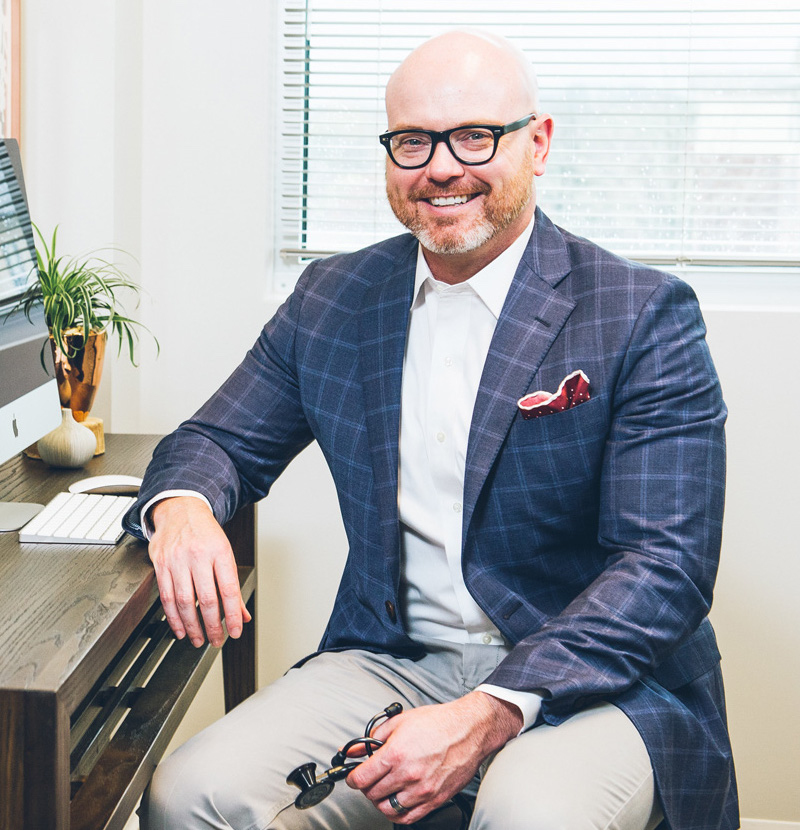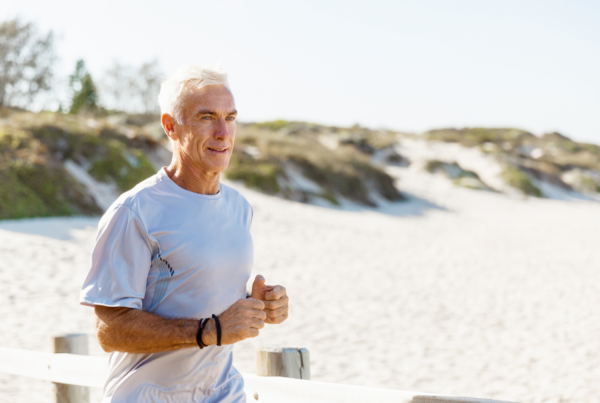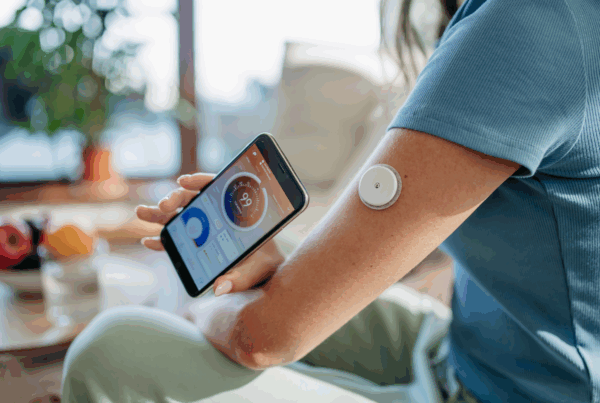Download file | Play in new window | |
My North Star is helping people live a long time and feel great doing it.
The most useful approach I’ve found to accomplish this is to reverse-engineer the diseases most likely to take you off the planet. So when we talk about serious health threats here, it isn’t speculation. It’s data.
The good news? Of the top 10 killers of human beings, you can take steps toward delaying, preventing, or overcoming most of them.
My good friend Zane Griggs and I recently had the privilege of speaking to a group of movers and shakers in Nashville on this subject to illuminate the pathways we consider most valuable for disease prevention, detection, and longevity. I’d like to share my thoughts from that talk with you, too.
Enemy #1: Metabolic Disease
Of the top 10 killers of human beings, seven are directly or indirectly linked to what we call metabolic disease.
Metabolic disease is a fancy term for energy dysregulation. Metabolism is, essentially, the process of converting unusable forms of energy from food into usable forms of energy for all our bodies’ activities. When that energy conversion process goes awry, we have metabolic disease.
You might recognize the most famous representative of the metabolic disease family: diabetes. This disease by far gets the most press as a top metabolic disorder, and not for nothing. No disease will outpace diabetes worldwide over the next 20 years. It is truly THE health epidemic on our planet.
However, diabetes isn’t our only metabolic concern. If you consider many of the top conditions that most commonly end lives — heart disease, cancer, stroke, liver disease, and, yes, diabetes — they all connect to metabolism.
In that case, all roads lead to a crucial consideration: How do we delay metabolic disease? And if we get really good at delaying it, can we prevent it altogether?
Start With the 3 Pillars of Health
Most meaningful health progress starts in one of three core areas:
These three pillars form the foundation of any strategy to delay or prevent metabolic disease. They’re not new ideas, but science and experience continue to affirm just how critical they are.
To really give metabolic disease the attention its threat level deserves, we must address these three areas of our health with a proactive, offense-minded strategy.
Nutrition
One of my core beliefs is that you can’t outrun your mouth. No amount of exercise will undo a diet that doesn’t match your health goals.
The Food Problem
We have a metabolic disease epidemic today that stems largely from living in an environment that actively fights against metabolic health. Food (i.e., energy) is everywhere in the United States. We have constant access to meals, snacks, sodas, Uber Eats, and whatever our cravings decide we need next.
This was not the human condition for most of our existence. In all of history until the Industrial Revolution, we typically had longer periods between eating and we ate far less-processed foods.
Zane made a point during our talk that I loved: We shouldn’t blame ancient foods for modern diseases. And he’s right. Back when people ate more of the foods on nutritional hit lists of the last 50 years, they had lower rates of every disease I’ve mentioned here — by far.
The explosion of processed food has been one of the most significant drivers of metabolic dysfunction in our time. Specifically, Zane called out processed sugar, highly processed grains, and processed vegetable oils.
So remember: If it wasn’t food 150 years ago, it probably isn’t food now.
The Biochemistry Problem
Most of the world — including me — was taught that weight loss is primarily a math problem. Need to shed some pounds? Eat less, exercise more. Reduce those calories in, increase the calories out.
But I discovered an important caveat to this old paradigm while working in the weight loss space for years: Metabolic disease hates math.
For the metabolically pristine, weight loss is indeed a math problem. Eat less, exercise more, lose weight. Simple. But for those with metabolic disease — insulin resistance in particular — weight loss becomes much more complicated.
In a state of energy dysregulation, biochemistry becomes at least as important as math. Probably more so. So if you’re one of the millions of Americans cutting calories, working out, and seeing little to no results, it’s not some character flaw. It’s biochemistry.
Movement
If you remember nothing else from this post, remember this: Strength training two to three times a week is the single greatest thing you can do for your current and future self.
As Zane pointed out, metabolic disease is largely about your body’s ability to manage glucose. Strength training increases your insulin sensitivity and your muscle mass. Muscle is the primary site where glucose gets stored, so more muscle means better glucose control, directly supporting metabolic health.
On top of that, resistance training helps preserve independence, maintain quality of life, and ward off many of the age-related declines that tend to sneak up when we’re not paying attention. We’re after more than just living a lot of years; we’re after living a lot of quality years.
Zane mentioned the importance of cardio as well, though with a twist. Rather than living in the middle, he recommends the two extremes — light and intense exercise — for longevity, modified for safety as you age.
Rest
We spend a full third of our time on this earth sleeping. How can it not be incredibly important, if not the most important?
I’ve come to view sleep as probably the most underrated human activity of all time, and it’s jumped up my personal leaderboard in terms of significance.
Like many people, I punted sleep my whole life, thinking sleep deprivation was the “hack” I could exercise to gain ground in other areas of life. The military, med school, running an emergency department, starting a family, establishing my own practice — sleep took a back seat for over 20 years.
At 50, I’ve discovered just how significant the costs of undercutting this pillar of health really are. Despite paying strategic attention to my health for years now, I’m still stuck managing the previously unseen consequences those years of sleep deprivation wrought on my body. (More on that later.)
GLP-1 Agonists: The Best Thing Since Moldy Bread
I believe GLP-1 receptor agonists, like semaglutide (Ozempic, Wegovy) and tirzepatide (Mounjaro, Zepbound), may be the most significant pharmacological breakthrough since penicillin. That’s a strong statement, and I could certainly be wrong, but this class of drugs is categorically changing how we approach the battle against metabolic disease.
They’re not a silver bullet. And like any powerful tool, they can be misused. But for people already deep in the weeds of insulin resistance and metabolic dysfunction, GLP-1s offer a lifeline. They dramatically improve blood sugar regulation, suppress appetite, and reduce inflammation. In many ways, they act as a biochemical reset button.
As Zane emphasizes, people using these medications need to eat ample protein and lift weights to maintain their lean muscle mass. They also must work to change their eating habits, which should be easier on the drug, or all their improvements will disappear once they stop taking it.
I’m hopeful for a two-pronged approach we could take for the future with these drugs:
- Addressing existing metabolic disease through effective, targeted drug therapy alongside lifestyle modification
- Preventing future metabolic disease through systemic dietary change
While GLP-1s are a blowtorch to metabolic disease, they aren’t cheap. Insurance coverage is spotty. And yes, there are people taking them who arguably don’t need to. But when used appropriately and with guidance, they can be a transformational part of a metabolic recovery plan, potentially preventing millions of people from developing future diseases that would reduce their length and quality of days.
Prevention and Longevity: Key Testing
Prevention is one side of the coin; early detection is the other.
Discovering a scary health problem isn’t the worst thing that can happen to you. Discovering a scary health problem without any runway to address it is.
Early detection is one of my mantras, and I preach it wherever I can. When you take a proactive approach to hunting for the diseases most likely to take you off the planet, you give yourself the opportunity to fight them when they’re smaller, more manageable, and/or reversible. If you wait until you hit the iceberg to turn the ship, however, emergency maneuvers may not be enough to save it.
Below, I present the top two innovative health tests I recommend today. They’re not the only tests I recommend, but they’re the two you’re least likely to have heard of.
Your doctor might not even know about them — they’re that new. But I want to make sure everyone has the knowledge and the opportunity to make optimal decisions for their health and longevity.
As a physician, I take conflicts of interest seriously. I’m not being paid for anything I discuss here. I’m sharing these tools because I want to, because I find value in them, and because they’ve benefited me and my members.
Cardiovascular Screening: Cleerly
One of the more common heart disease screening tests today is the cardiac calcium score. But this test, while helpful, has limitations.
Calcified plaque is end-stage plaque. It’s hardened, stone-like plaque that, yes, narrows the blood vessels, but it’s also very stable. The precursor to calcified plaque is soft plaque, and soft plaque is a big problem.
Soft plaque is unstable plaque that can rupture and send clots careening through your bloodstream to your heart or brain. This is the kind of plaque that’s responsible for most heart attacks and strokes.
But there’s a major problem: Soft plaque is invisible to a calcium score.
Until recently, the only way to see a clear picture of your cardiovascular health — including soft plaque — was to go in for a cardiac catheterization, or heart cath. You’d get sedatives or anesthesia while a cardiologist sent dye and a thin tube through your blood vessels and a machine took X-rays to locate any blockages.
Thankfully, modern technology has come up with a better option.
In the last few years, a company called Cleerly developed what I’d consider the George Jetson version of a heart cath. It’s non-invasive and requires no sedation. In fact, on the patient’s side, Cleerly is simply a high-quality CT scan.
On Cleerly’s side, they take the images from your CT scan, upload them to their AI platform, and get back an incredibly detailed virtual recreation of your coronary arteries, including total plaque burden, plaque location, plaque composition, and more.
Personally, I got a Cleerly scan almost as soon as I learned of, and researched, the company. And I’m so glad I did.
Previously, my calcium score wasn’t terrible, but it wasn’t zero. I knew I’d done some damage to my cardiovascular health during those years of punting sleep, but I thought I was doing okay. Then I got my Cleerly scan.
It turns out, I had 10 times the soft plaque lurking in my arteries as calcified plaque. While this was a pretty shocking discovery for me, I was thankful to have the knowledge I needed to take action.
This is what I mean when I talk about hunting for the top things that could take you off the planet early. My soft plaque burden existed whether I saw it or not. But by seeing it, I could address it before it became something worse.
Early Cancer Detection: Galleri
Cancer is the second most likely disease to take humans off the planet. Yet of the top 50 cancers that affect all people, we only have five routine screening tests — breast, cervical, colon, prostate, and skin. If you break them up, that’s only four for women and three for men.
For all the other cancers — liver, pancreas, lung, bone, brain, kidney, and many more — we wait until symptoms appear and then screen. But, by definition, symptoms mean later-stage disease, which means more difficult treatment and worse outcomes. And over 70% of cancer deaths come from cancers without routine screening tests.
This is another area where we’ve desperately needed innovation, and Galleri has brought it.
The Galleri test is what’s commonly called a blood biopsy. All that means is you go into the lab as usual, give blood (no fasting required), and wait while they send your samples off to Galleri for evaluation. You’ll wait about two weeks for your results, which is why I call this a “sweaty palm test.”
In that time, Galleri uses their unique AI-supported system to identify cancer particles in your blood they call “cancer signals.” They can then suggest with high probability the specific area in your body where those signals originated.
While I still recommend getting the five standard cancer screenings already available, Galleri offers an innovative way to screen for over 50 additional types of cancer we wouldn’t otherwise detect before symptoms arose.
Galleri offers a clear yes or no on the question of cancer, though it has a 1 in 200 chance of a false positive. Though that’s considered highly reliable for a screening test, it’s a risk anyone taking the test needs to be prepared for.
On the positive side, 199 people out of 200 discover they have cancer when they didn’t know a day before. This allows for early intervention and much better outcomes. When you catch cancer at stage 1 or 2, surgery alone could be curative, avoiding the need for chemotherapy or radiation.
This test gives us a chance to detect cancer while it’s still silent — and before it becomes life-altering.
Self Advocate and Find Your Team
I want people to live a long time. But time without health isn’t all that valuable. To quote Confucius, “A healthy man wants a thousand things, a sick man only wants one.”
I want people to live a long time well: clear-minded, energetic, free of chronic disease, and in control of their bodies and lives.
If you look at areas in life where you’re already thriving — economics, family, relationships, impact on the world — you’ll see advocacy you’re deploying on your own behalf or on behalf of what you care about. Your health requires that same advocacy.
In the ideal world, you’d have a doctor-patient relationship where the only stakeholders were the doctor and the patient. This is why I love practicing medicine the way I do; I’m not beholden to anyone but my members, so our goals can immediately align.
If you already have a doctor who shares your goals and listens when you advocate for your health, I’m incredibly happy for you! Stay the course. But if you’re stuck in a doctor-patient relationship where goals don’t align and you aren’t getting the care you need, I strongly urge you to find your team.
Find a team that will treat you as an individual, listen to your concerns, and work with you to hunt for and prevent the top killers that take people off this planet. This is one of the best ways to advocate for yourself today.
In the meantime, if you’re currently stuck with a doctor who refuses to, say, order that fasting insulin blood test you requested, Zane recommends taking ownership of your own lab work.
It may sound daunting, but it is possible. He suggests ordering such tests online and getting your blood drawn at a local facility. Easy. And then, you own all your labs. They go where you go, which is helpful when you find that doctor who will help you manage your health like the valuable asset it is.
You wouldn’t outsource your family or your business to someone else. Take that same ownership approach with your health. Your community, your family, and your purpose are all counting on you not dying early.

Dr. Aaron Wenzel is a concierge physician specializing in the care of fast-moving entrepreneurs, executives, and public figures in the Nashville, TN area. Dr. Wenzel’s diverse life experience and extensive training in family medicine, emergency care, nutrition, and hormone replacement therapies give him the unique platform to provide unmatched care for his patients.









